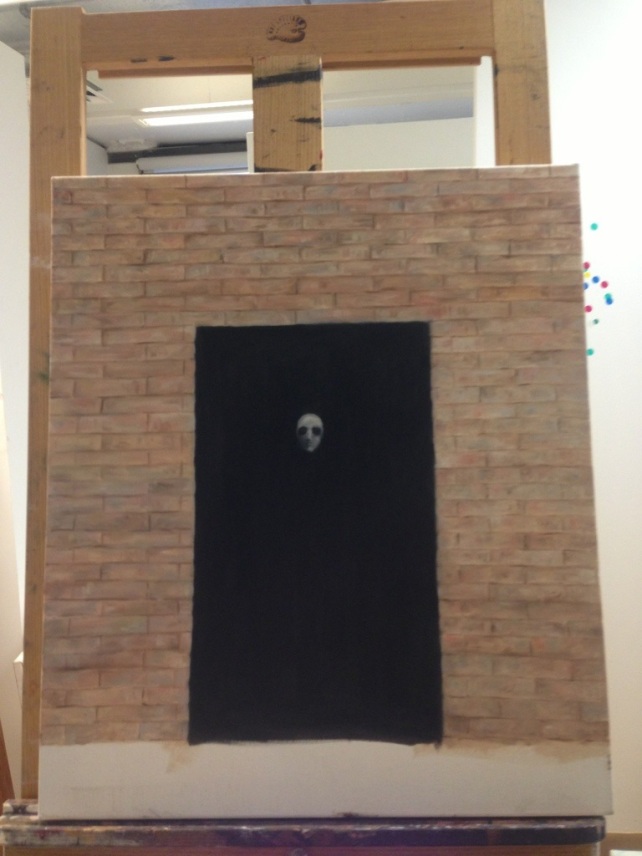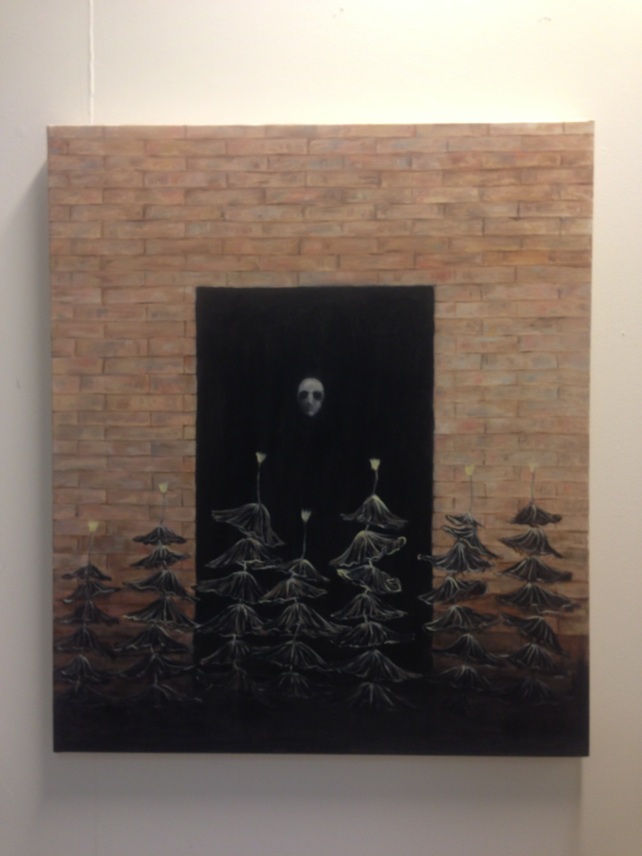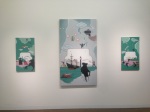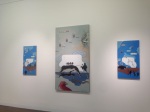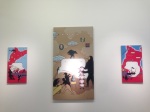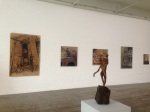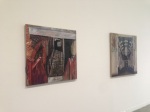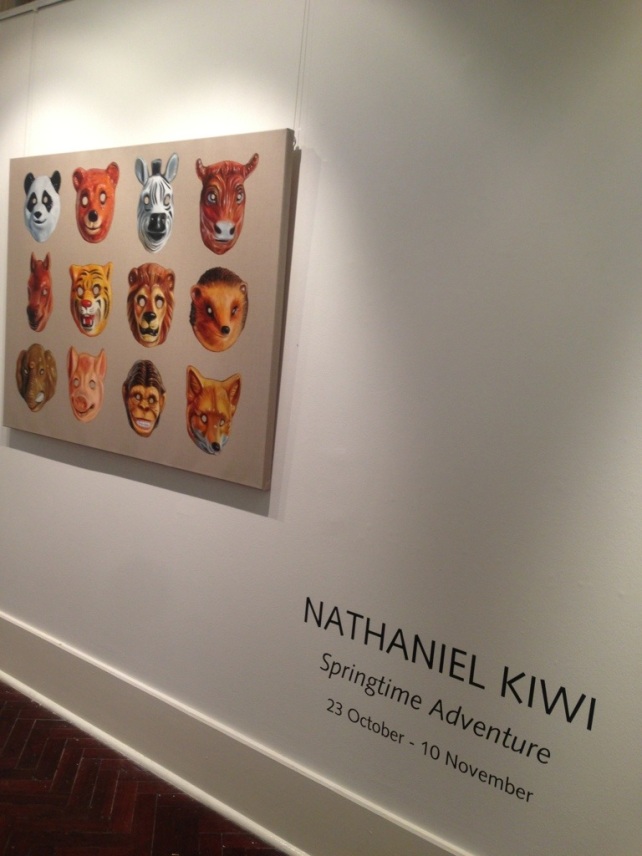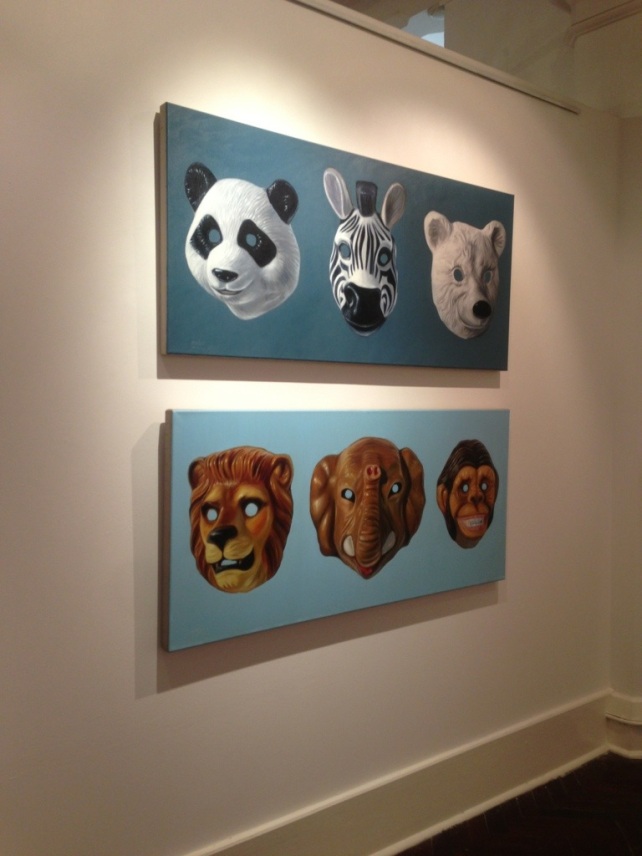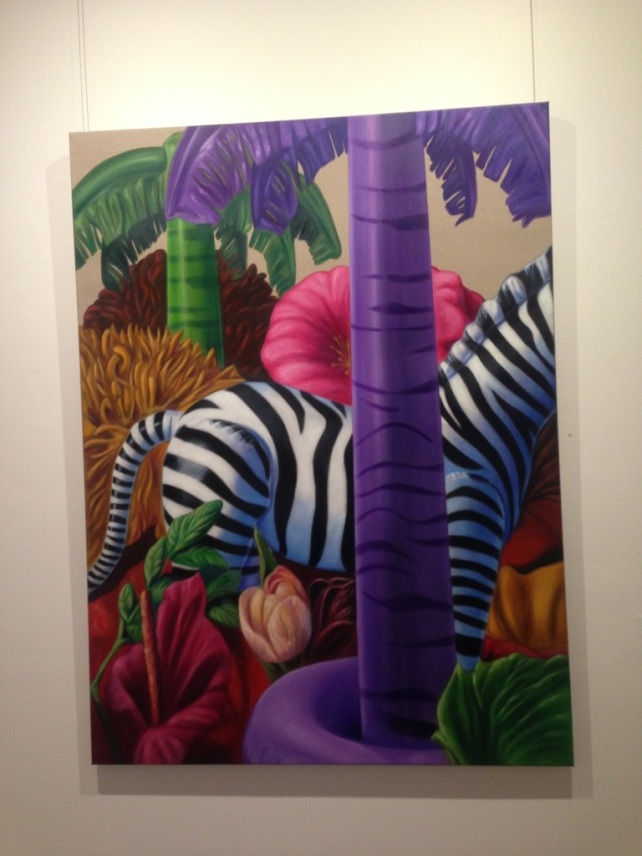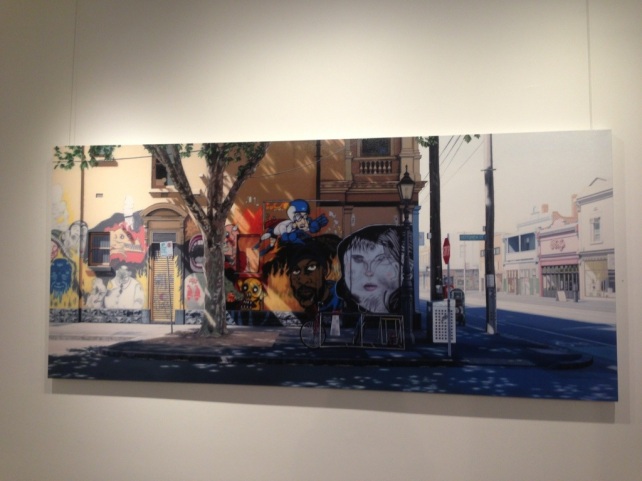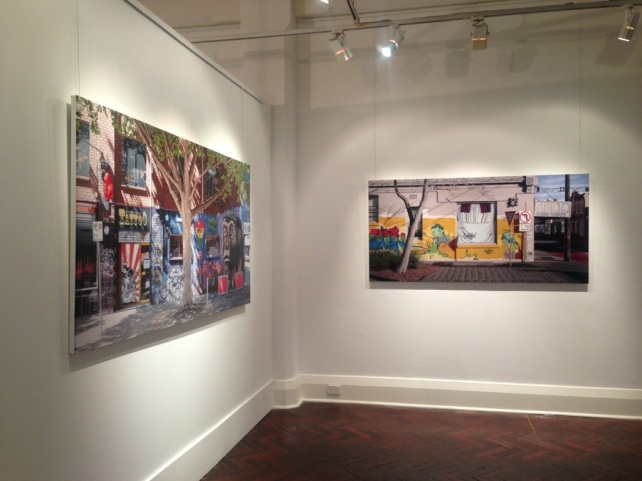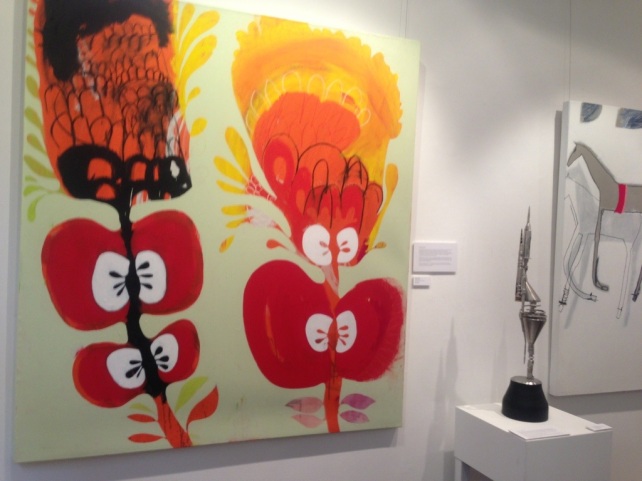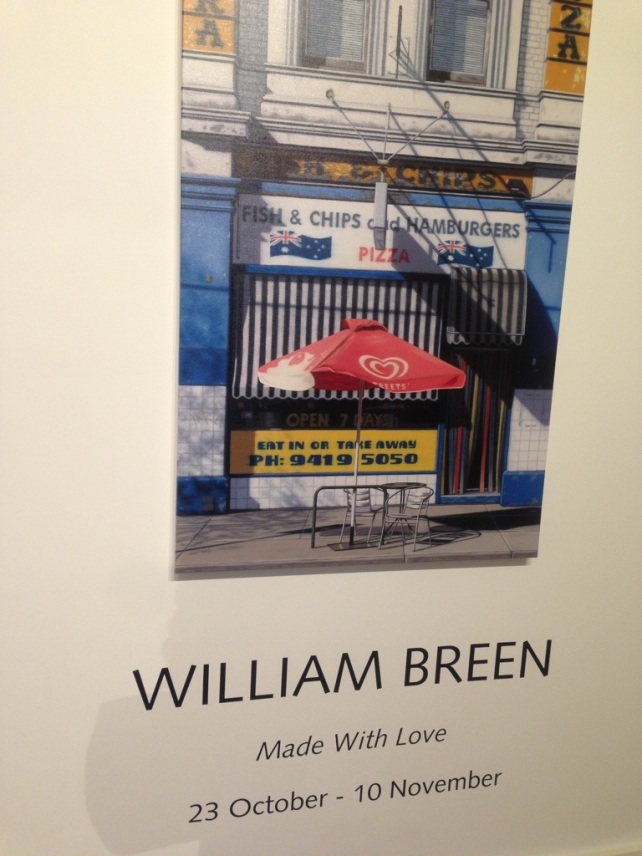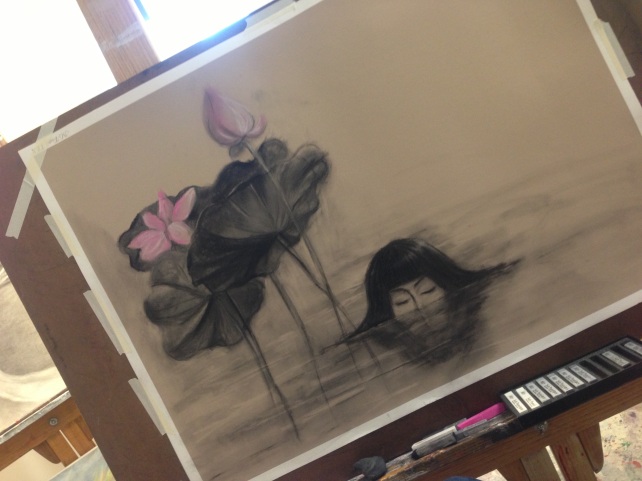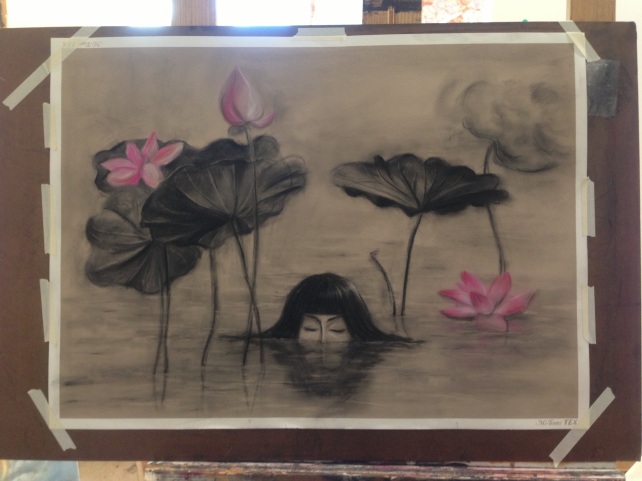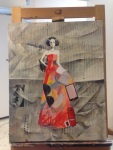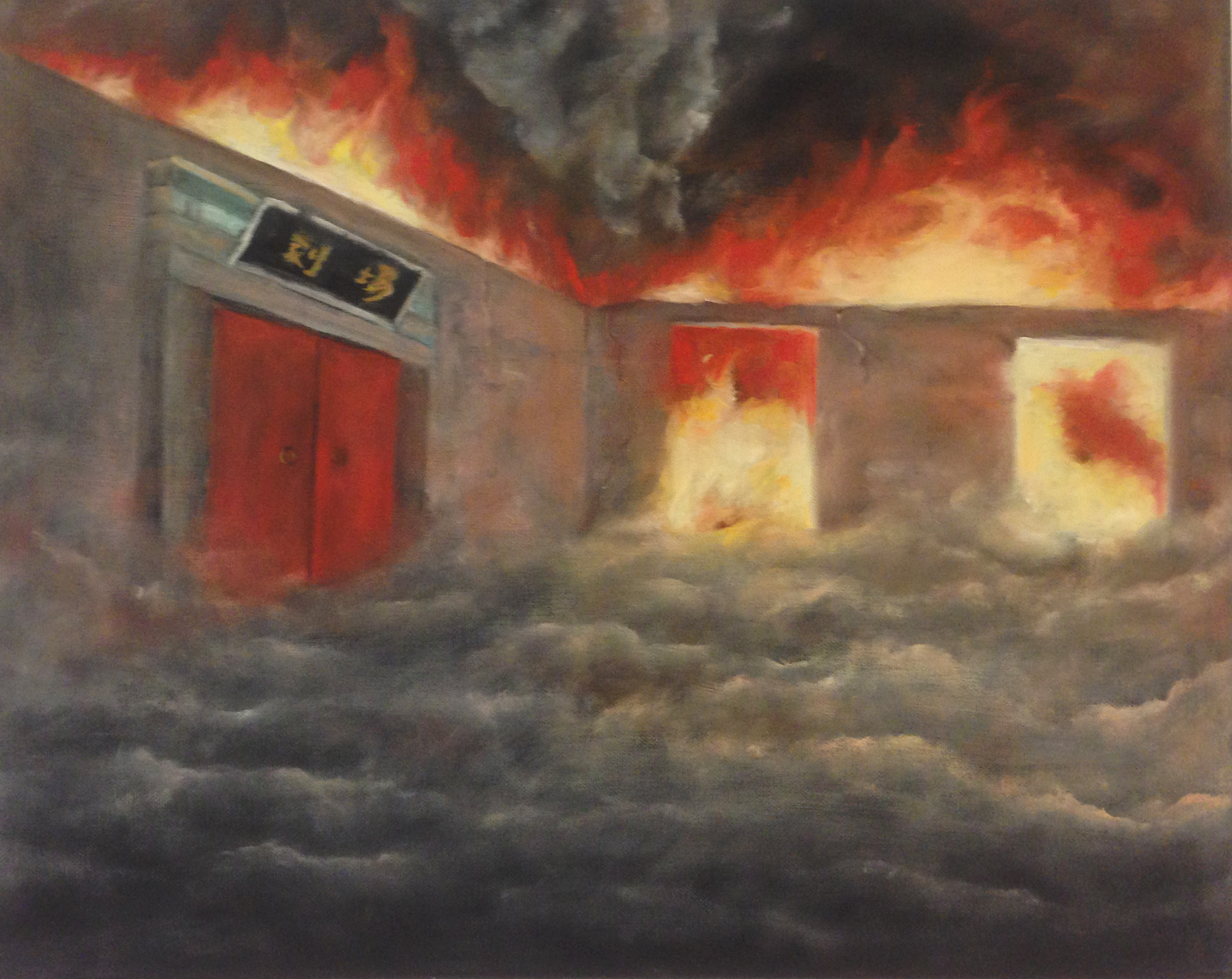
My painting – the burning theater
The traditional theater is burning. Fire represents hope but fire can destroy everything as well.
Art forum – aritst review
The artist impressed me is Harry Nankin. He is a Melbourne based photographer, educator and environmental artist. He went back to old photographic technologies since giving up the commercial photographic market. His most recent project, Syzygy (2007-10) literally uses the ‘light of the universe’ to render enigmatic images on film of the heavens and earth.
He talked about the relationship between object and light and taught us how to get better effect of photograph. Most of his work addresses the contested meanings attributed to nature and land in modernity, a concern he has described as the search for an ‘ecological gaze’. To do this he often uses the camera-less ‘photogram’ or ‘shadowgram’ to record ecological phenomena: employing processes that are partly land art, partly performance and partly photography, he endeavours to turn the landscape itself into a camera.
He not only attempts to reproduce the relationship between self and nature in the relationship between viewer and photograph, but also attempts to reveal some of the inner meanings of Nature in the photograph themselves.
I especially like the picture entitled ‘The Order of Suffering’, which I posted in my blog last time. In that picture some dead sea birds are arranged on the sand in postures what already prefigure the impersonal skeletons they are soon to become, but also evoke the agonies of the deaths they have so recently experienced. The composition conveys a sense of the ways in which the lives of individuals – so full of struggle and anguish – fit into a greater Scheme, a Scheme which is characterized by stillness and serenity, a grave and beautiful necessity that transcends compassion.
my painting today:)
ARC one gallery 26/10 exhibition review
9 October to 10 November
Guan Wei
The Enchantment
Flinders Lane gallery 26/10 exhibition review
Nathaniel Kiwi’s recent paintings explore themes of fertility, metamorphosis and transformation through collaged landscapes inhabited by animal masks and floral motifs. Kiwi uses contemporary and vintage resource material to create a unique world that is at once modern and nostalgic. Inflatable palm trees sprout through jungles inspired by vintage botanical illustrations as plastic animal masks journey through lands based on exotic 18th Century scenic wallpapers. In contrast, his formal compositions are contemporary studies of masks as symbolic objects, albeit endowed with the importance of mounted trophy heads. Kiwi creates a sense of occasion within these works but frees us to define, or not define, the context – inviting you to ‘Choose Your Own Adventure’.
Nathaniel Kiwi is a Sydney based artist and has been a finalist in the Blake Prize, The Eutick Memorial Art Prize, The Black Swan Portrait Prize and The Mortimore Prize. His work is held in the Artbank Collection and private collections throughout Australia.
In this new body of works William Breen explores the streets of Fitzroy, capturing the early morning light and the instantly recognisable graffitied walls of the area in his meticulous oil paintings. While each painting is devoid of people, there is always some evidence of activity- a bike chained up, a door ajar, a glowing neon OPEN light. In capturing and recontextualising this urban landscape in a gallery setting, Breen is also capturing a social and cultural moment, making further intervention and change impossible. Framing this moment in time, the stillness and quietude expresses both a moment of significance and the promise of possibility.
From the utter stillness of Vermeer’s domestic scenes to the haunting pre-dawn activities in Georgio Di Chirico enigmatic landscapes, painters have a unique ability to manipulate the scenes they depict. The urban landscapes of William Breen reveal such a confidence, transforming the ordinary into the extraordinary. Having deliberately removed any trace of human life, traffic or debris from his scenes, Breen transforms the normally bustling streets of inner city Melbourne into dreamlike landscapes of uncanny quiet. Captured in what appears to be the near horizontal light of early morning, these uninhabited built environments take on an immobile quality. Breen succeeds in halting the moment, freeing it from the urgencies and anxieties of the everyday.
Earlier works of Breen’s featured buildings with a frontal face to the viewer. These latest works opens up the streetscape, allowing the viewer to enter into sidestreets and around corners and providing tantalising glimpses of sundrenched facades and businesses yet to open.
How to paint fire with an airbrush – Mural Joe
today’s drawing :)
4 Corners
Today’s painting

